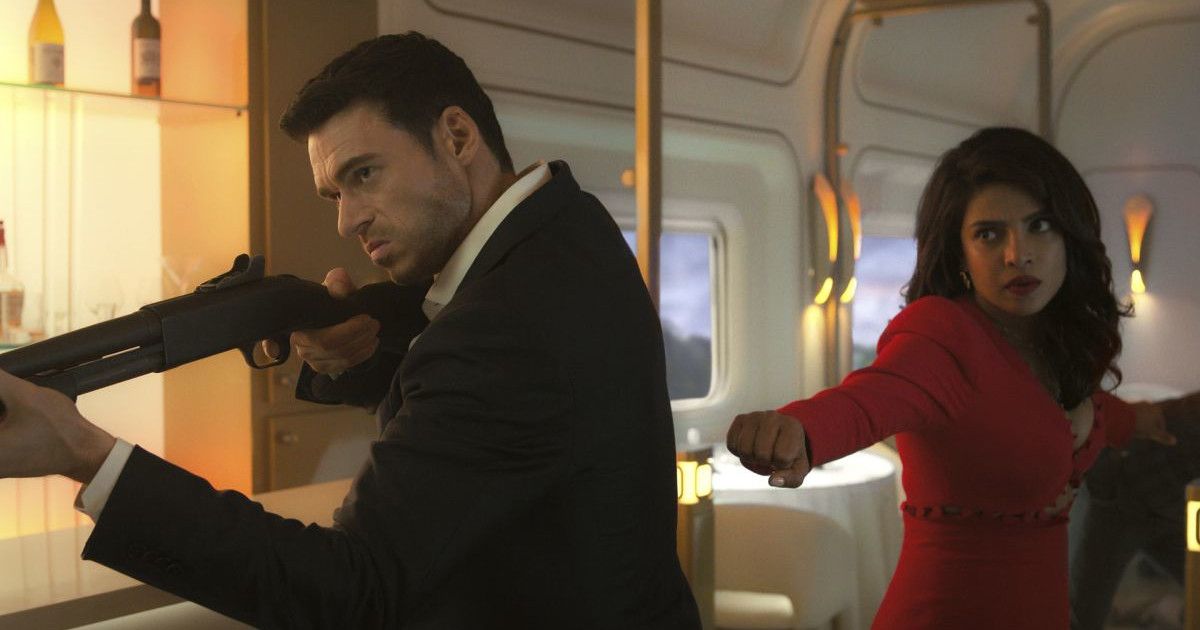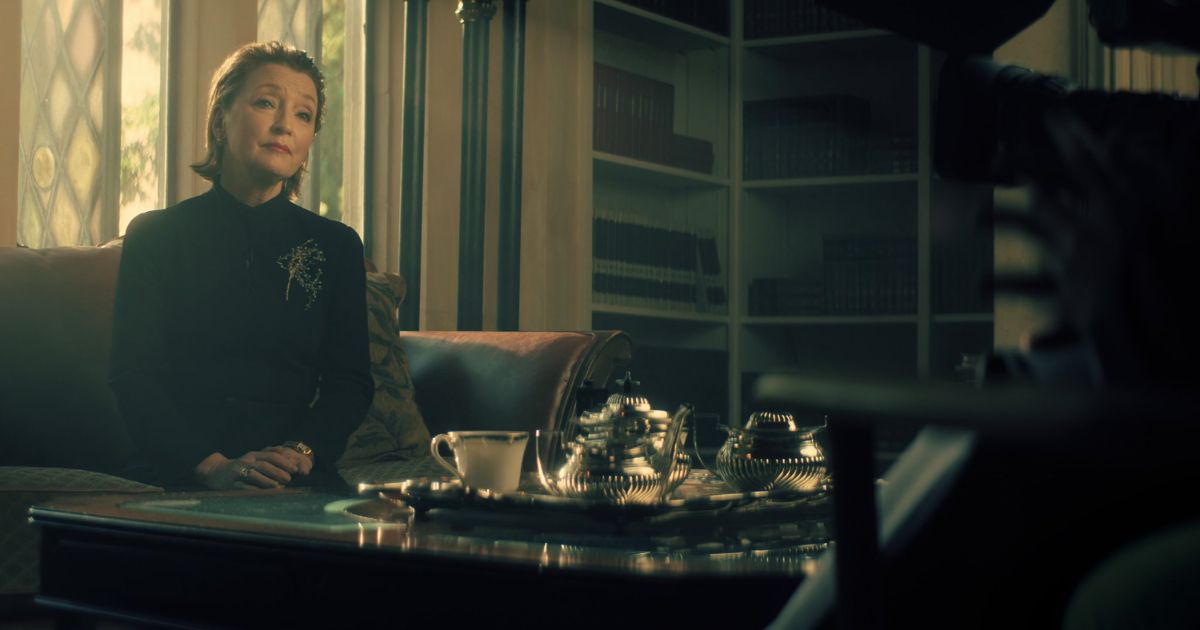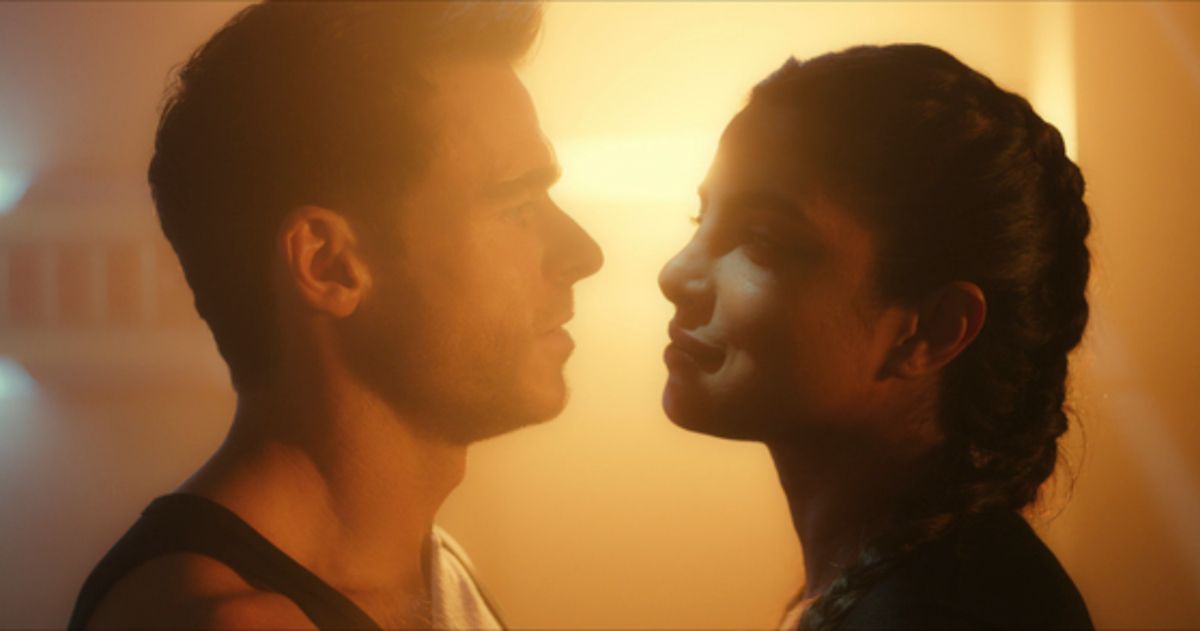Citadel is a spy series currently airing on Prime Video starring Richard Madden and Priyanka Chopra Jonas. The series is from producers Joe and Anthony Russo, who audiences likely recognize as the filmmakers behind many Marvel movies, including both Avengers: Infinity War and Avengers: Endgame, which are two of the highest-grossing movies of all time.
The Russos’ first MCU film, Captain America: The Winter Soldier, featured impressive stunt work that redefined superhero action forever. Much of that success is due to their impressive stunt team behind the movie, a team that has only grown as the Russos have become bigger names in Hollywood. Two of those names are James Young and Don Theerathada, who have both worked with the Russo brothers in the past and now are key behind-the-scenes voices on Citadel.
James Young has worked with the Russo Brothers since Captain America: The Winter Soldier as the fight coordinator on all of their MCU projects. He also served as the stunt double for Sebastian Stan in Captain America: The Winter Soldier and Robert Downey Jr. in Captain America: Civil War. He was the fight coordinator on Guardians of the Galaxy, Guardians of the Galaxy Vol. 2, and Black Widow. In addition to being a stunt coordinator for Citadel, Young also serves as second unit director.
Don Theerathada has worked on the stunt teams for many high-profile projects, including Suicide Squad, Aquaman, and Venom. He was the fight choreographer for Creed II, an assistant stunt coordinator on The Matrix Resurrections, and a fight coordinator on Hawkeye. He was the stunt coordinator on The Gray Man, where he meet the Russo brothers and James Young and got the job as stunt coordinator for Citadel.
Young and Theerathada sat down with MovieWeb to talk about how they got into stunt work, how their collaboration with the Russo brothers has evolved over the years, and if they would like to see stunt work recognized by the Academy Awards.
Getting Into Stunt Work
MovieWeb: How did you guys get into stunt work? That’s not a typical career people think of when they think of getting into the movie.
James Young: I mean, for me, it was martial arts. I was teaching in a martial arts school for years, and one of the other teachers was a stuntman. And I started training at a gym […] A lot of stunt people trained there. I made some great friends and started shooting some videos online on YouTube. And it just kind of snowballed from there. And all of a sudden, you know, choreographing, coordinating, and second unit directing. I think with stunts, there are many avenues and many ways to get into it. Many specialties at first. For me, it was fighting and martial arts and choreography, and then I branched out from there.
Don Theerathada: Yeah, it’s still a similar kind of story, like James said, I started doing martial arts as a kid. Competed a lot of growing up, and then I kind of changed the field to track and field and focused on that. And I was supposed to represent Thailand for the 96 Olympics. So you know, I had to go to Thailand ahead of time, I think I went in 92, 93. And started training, blew my knee out. So I couldn’t compete anymore, but then kind of found the whole entertainment world and started working in some shows some films, and Jackie Chan kind of took notice.
Theerathada: I got recruited by [Chan] and went back and forth to Hong Kong several times between Taiwan and Hong Kong. And then Jackie was telling me it’d be good to go to America and learn everything I can. So Jackie kind of took me under his wing. I learned a lot from him. He told me to go to America. And it didn’t matter, he said, whether it was stunts or anything else, just learn, learn, don’t worry about money and all this stuff. And that’s kind of what I did, and then found the group here. Fell into the 87eleven Group. And yeah, I’ve just been doing it for over 30 years.
Collaborating on Citadel and The Gray Man
MW: Between the two of you is a very impressive filmography. James, you started working with the Russo’s on the Marvel stuff; Don you joined for The Gray Man, and that is how you both met. How has your collaboration grown between The Gray Man and Citadel? Has there been a difference working between a film and a television series?
Theerathada: It was awesome for me, because The Gray Man was the first time I met James. And I was lucky enough to fall into that project because I knew the other stunt coordinator, Daniel Hernandez. He kind of asked me to come help out. During that time, I had been out of the country all the time, and it was filming in LA, so I was like, “Okay, you know, let’s let’s do this. It’ll be fun”.
Theerathada: Then I met James, and you know, James was the second unit director on The Gray Man. I felt like we had a good collaboration together, like we understood each other, and James is fun to work with. We get each other, so it was a nice opportunity to be with him and the Russo brothers. The Russo brothers are amazing. That was my first time working with them. They’re a big family, and it just makes work not work. It’s just fun.
Young: Yeah, it’s exactly what Don said, it’s so much fun working for Joe and Anthony. I’ve worked with them since 2012, from Winter Soldier onwards, and have done all their Marvel movies. And the one thing that they’ve always been great with, and this is why Don kind of slotted in nicely, is there are no egos, and there’s no kind of overbearing action, like, there’s action storytelling. So at the end of the day, to be able to tell a story, you have to be able to listen.
Young: We often play with the Russos. It’s often [like] the best idea wins, and what’s going to work best for the character and the story. So Don coming into that was fantastic. We’re always going to kind of scene study more than anything and explore the action and how we can progress character and story; choreography is secondary to that, in our opinions.
James Young and Don Theerathada on the Russo Brothers
MW: How has your working relationship with the Russo brothers changed over time? Have you developed a sort of shorthand with one another?
Young: Oh, Joe and Anthony are amazing to work with. I mean, ever since Winter Soldier, they run one of the best sets, if not the best set I’ve ever been on, on every movie; it’s why I still work with them every chance I get and will continue to do so in the future I hope. It’s such a fun set to be on, everyone’s a family.
Young: I mean, I’ve worked with some people on these, like the Citadel set that I started with or Winter Soldier, so over at least 10 years, 11 years, I’ve worked with these people, and it just makes it a family. It makes it easy, with how crazy filmmaking can be with the hours and how fast you have to be at times, doing it with a crew that’s been handpicked by the Russos over the years, it’s a well-oiled machine. And it’s such a joy to be a part of that and to be able to be a part of that machine with everyone.
Theerathada: I was the new kid on the block. First time working with the brothers, and it’s intimidating because I’m still figuring out the situation, I didn’t know them very well. They don’t know me very well. You know, I just tried to avoid them in the beginning. I’d say, “Okay, James, you know them, you go talk to them, I’ll kind of stay outside.” Then you just start seeing, like what James said, there’s no ego. The brothers are very open and super nice. They’re open to ideas and all that, and then it just becomes more natural and more relaxing. As James said, it’s just a big family, and I’ve been doing this for 30 years and have never seen a crew like this. Everyone’s super cool, everyone gets it.
Working Together So the Action Serves the Story
MW: In terms of your collaboration with each other, how do you guys handle trading off duties with one another? Does somebody specialize in one area more, or is it a trade-off between the two of you?
Theerathada: Each project is different. We gelled well together already on The Gray Man. So like, as far as a stunt team or just depending on the show, we might have other people come in, but we delegate a lot. So there’s a lot of communication between James, myself, and the rest of the team. It’s like, “Okay, how about you go focus on this, I got this part. Hey, James, do you want to do this part now or do something else?” So it’s just a good collaboration there, and we just kind of help each other. That’s what the team is, and we just try to make it as smooth as possible and then works well.
Young: A stunt team is like a mini-movie production. We shoot pre-vis of the action often. And so it all goes from design, like I’ll fully design a sequence, storyboard it out, kind of get it bullet pointed with what we’re trying to accomplish, and then people work on the floor and different groups come up with choreography and moments.
Young: It’s really just like Don is saying, you delegate everything when you’ve got a whole season to go through. With big action sequences, I can design one sequence and get it laid out, and Don can start fleshing it out with the team and doing choreography and designing ideas with them when I’m designing another sequence, so you have to be malleable, you have to be adaptable, and you have to just have a good team that can recognize that.
Theerathada: Yeah, and just piggybacking on that, scheduling changes all the time, and there’s always more than one unit. So James is directing the second unit, and the first unit is going on, and like, you originally planned to all be on the second unit with James to do this sequence, but then the schedule changes. So now there’s another action sequence on the first unit, and I’m like, “James, okay, you guys got this, whatever, I’ll go take care of the first unit.” It’s a good clear work environment, so it just works out.
MW: You both have worked on superhero projects and spy espionage projects, which are two very different genres. How do you guys tackle those two different types of stunt work? Is there any difference when it comes to choreographing their stunts?
Young: Now, [superhero movies] are more genre-specific. In terms of, like, Winter Soldier. It was not so much a superhero movie, it was actually like a political spy thriller […] So we always like to kind of bring a little bit of those worlds together with a little bit of moments that a little bit. I think there’s so much superhero saturation, you can just kind of see it in everything now. So what was really fun for us was trying to bring more of a kind of A History of Violence, or No Country for Old Men kind of, like slowing the action down and getting a bit more violent.
Theerathada: It’s just all about the story points, right? The feelings and the characters and what they’re going through during that sequence. Those are the things that are consistent through every project. The way they fight, the powers or no powers that they have, or the memories they don’t have — those are the gimmicks, right? And that’s what you design around the story points. So even though Citadel‘s not a superhero movie, you’re still taking the elements of the characters and putting them in there. James and I, we have just been doing it for so long that the choreography is not really, “punch here, kick there, throw the person here, whatever.” It’s just what the story points are. And making sure that that comes across in the action sequence.
Why There Should Be Oscars for Movie Stunts
MW: There’s been a lot of discussion both online and within the industry about wanting to see stunts recognized at the Academy Awards. Is that something you guys have strong opinions about? Is that something you would like to see? And was there any particular stunt from a movie or a show last year that you guys did that needs to be recognized?
Young: What was nice is we do have our Taurus Awards, which do bring a lot of recognition to stunts, but I think having it on a global scale at the Oscars would be amazing. I think it absolutely deserves to be in the Oscars. We are a large part of filmmaking. When you look at the top 15 biggest movies of all time, they’re all kind of big action movies.
Young: To me, I think it just has to be handled in a safe way. Because what I wouldn’t want is there to be Oscars for, like, the biggest, hardest smash and whatnot, because you’ll get people trying to glory hunt and trying to really destroy themselves to get a trophy. But I definitely think there should be recognition for sequences and choreography, for performances, but I think it needs to be handled in a safe way. Always.
Theerathada: Yeah, I think it’s important. The world has changed a bit, or our industry has changed a bit. Back in the day, we were the silent ones, right? Our job was to be silent. People didn’t really understand what we do, and people still don’t really understand what we do. I think they’re starting to understand it more now because of social media. And there’s more awareness of what we do, but like back in the day, we’re not supposed to talk, right? We’re not supposed to say like, “The actor has a stunt double.” Everyone’s supposed to imagine that these actors are doing everything themselves. And that was the magic of Hollywood.
Theerathada: But now we know people are more intelligent and people understand the industry more, they know that sometimes there’s a double. I think it is important that our department is recognized now in the Oscars, just because we are a big element of a lot of projects. If all the other departments are getting recognized, you know we do exist. And there’s a lot of work, and we’ve risked a lot of people’s lives. I’ve been doing this for 30 years, and I’ve seen a lot of people get seriously hurt or die, and those are things that if you do it long enough, you’re gonna see it again. It’s just one of the facts about our department. So, recognition for that would be nice.
Young: As for stunts from the last year, I mean, I just saw John Wick: Chapter 4. You know the stairs gag and the van hit? There’s some great stuff. I think a lot of the stunt teams are really pushing out great, great, great action. Look at Day Shift, a lot of fantastic reaction falls and dead man’s wirework, in that movie, so those are the ones that kind of come to my mind right now.
Theerathada: Yeah, it’s the creativity of trying to achieve all these incredible sequences without killing everyone for real. We’re constantly trying to evolve the industry in the art department and being creative with putting gags together that are possible, like having someone getting hit by a car, like 20 times in a row. We have to figure out how to make that possible. These are all things that we put a lot of thought into. We’re not just cowboys, where we just go, “Oh, just do it.” You know, there’s a lot of design, prep, and all that. There’s a process to this madness. So, yeah, it would be cool to be recognized for that.
Be sure to recognize stunt work more often, especially in the epic finale episode of Citadel, which premieres May 26th on Prime Video.
This story originally appeared on Movieweb





